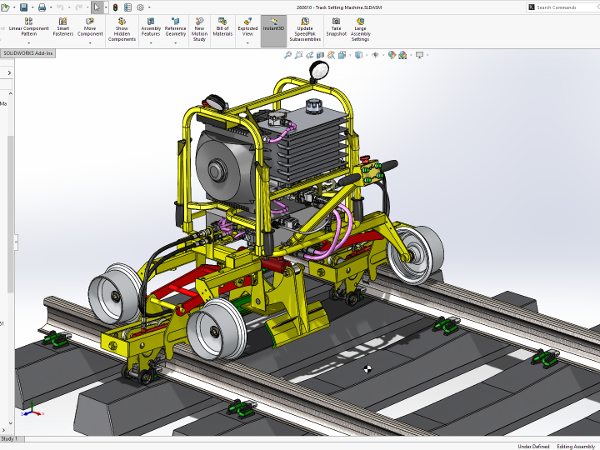Recognizing the Importance of Internet Resources
The activities performed in the digital environment to ensure that all users, regardless of technical skills or other variables, can access and use digital resources are referred to as accessibility. Remember that only certain consumers have the same wants or objectives for digital products and services. Others do not utilize them at all. A screen reader may be useful for the blind, but it may not be appropriate for someone with a learning disability.
Who is It Likely to Affect?
There are several reasons why ubiquitous digital accessibility is necessary. As a result, people with disabilities may have improved computer skills and more access to information. As a bonus, people all around the world will have easier access to online media and services. Advances in digital accessibility assist people with diverse disabilities. Blindness, limited vision, hearing loss, and mobility issues are examples of disabilities.
The following additional benefits may be realized as a result of accessibility:
Improved digital accessibility may help people of all abilities. It may make it easier for the elderly to use many types of technology, for example. Accessing digital information and services may be easier for those who do not speak English as their first language.
The widespread availability of digital knowledge has resulted in a chain reaction of positive outcomes. It has the potential to improve business-to-business communication with a broader range of clientele. Even if they are unable to use your digital products or services, the general public can be contacted. You may set yourself apart in your company or organization by providing one-of-a-kind services. Many people who were previously unable to make use of your company’s benefits will now be able to do so.
Methods For Making Online Content More Accessible to Everyone
Maintain as much clarity and simplicity as possible. It may seem obvious, but it needs repeating. More plain English is required, as is a reduction in specialized terminology. It also entails making your content available in other media, such as audio and video, for clients who prefer or require this format.
QualityLogic can help you create online content that is more digitally accessible. They believe that accessibility is a human right and want to help businesses of all sizes satisfy this demand. They can bring your website up to date with training, design, and software testing.
Visualize Mental Images
Including media such as photographs and videos in your material is a beautiful way to make it more entertaining and clear. They must, however, be used with prudence in order to avoid accessibility issues. Text descriptions should always accompany visual content to ensure that visitors who cannot see images get the intended message. Make sure your photos and videos have enough contrast so that those with low vision can see them.
One of the numerous standards and regulations that govern digital accessibility is the Web Content Accessibility Guidelines (WCAG) 2.0. These rules and standards are being adopted by an increasing number of countries. It is critical to stay current on the latest regulatory developments to ensure that your products and services are compliant.
Start With the Basics of Accessibility
The most effective technique for reaching the broadest possible audience is to build digital goods and services that are available from the start. From initial user testing through final production, accessibility must be addressed at all phases. If you want your designs to be as user-friendly as possible, you should consult with accessibility experts.
Even though your products and services are meant to be accessible, they must be tested to guarantee usability. This ensures that your clients will be able to use them successfully. This entails using a variety of testing approaches and processes, such as automated accessibility testing tools and manual testing by people with disabilities.
They have a significant advantage since information is widely available on digital platforms.
The World Health Organization defines disability as impairments, activity limitations, and participation restrictions. Disabilities can impact a person’s physical, sensory, cognitive, intellectual, and behavioral health. Disability will affect one billion people worldwide, making it one of the most common health conditions. Education and work may be challenging for those with disabilities. Making digital content available to everybody is one way to address these issues.
Making websites and software accessible to people with disabilities such as deafness, hearing loss, vision impairment, and cognitive or intellectual disability is critical to this movement. With your help, we can make digital information and services more accessible to people with disabilities, allowing them to participate fully in society.
Digital Media is Available to People With Physical Disabilities
People with various disabilities face a variety of challenges while attempting to access the Internet. Screen reader software allows people with visual impairments or blindness to read on a computer screen. Closed captions or transcripts may be required for deaf or hard-of-hearing persons to access audio and video information. People who have cognitive limitations may require more basic content delivery. Individuals with physical limitations may require content that may be accessed through alternate input modalities such as switches or eye-gaze sensors. By keeping these diverse factors in mind, digital content designers and producers may ensure that their work is accessible to a bigger audience.
Designing For the Blind and Visually Impaired
It is vital to recognize that everyone has different preferences for interacting with digital information. Those with little or no vision, for example, must learn in other ways. Many potential risks must be addressed while presenting digital content to kids. Every image, for example, must have a written equivalent. The video should also include closed subtitles and audio explanations. Follow these steps to ensure that your digital content is available to everyone.
Hearing Loss Design Considerations
When creating digital content, it is critical to consider a wide range of demographics. Because of its limitations, certain people may require assistance in understanding popular content types. Closed captioning is one method of making digital information accessible to those who are deaf or hard of hearing.
Numerous elements must be addressed while producing closed captions for digital entertainment. Captioning should be simple to understand right immediately. Use a large font size and avoid intricate typefaces that may be difficult to read. The captions and audio must also be synced. The audio stream can be transcribed using captioning software or by hand. Finally, double-check the captions for errors.
By adhering to these guidelines, you may ensure that your digital material is accessible to people of all abilities. In addition to closed captioning, other methods of making information more accessible include audio description and sign language interpretation. Considering the needs of various target groups allows for the creation of digital content that everyone can enjoy.
Designing For Cognitive Impairments in Users
A number of factors must be addressed when developing digital content for people with cognitive disabilities. The first and most crucial stage is to recognize that each individual requires a unique plan. However, there are some guidelines that may be followed to speed up the data access process. Disability services, for example, advise using simple language and pictures. As a result, the reader may find the text more straightforward and clear. It is also critical to give several opportunities for debate and input. The reader is more likely to comprehend and recall information if they interact with it on their own terms. These guidelines will assist designers in developing digital content that is both accessible and instructive to a wide variety of people.
Please visit www.qualitylogic.com for additional information on how they can improve your online content. You may either contact QualityLogic straight immediately or begin using their setup kit. Whatever option you choose, QualityLogic will increase the accessibility of your website as well as the overall quality of your business.






